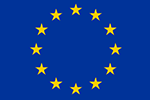Rights of passengers travelling in or from the EU by airplane
Content
Main European Passenger Rights Regulations and Flights where they apply
Regulations on Passenger Rights
Air transport, by its very nature, transcends national borders which determines that essential aspects of its regulation are established by international and European Union legislation. Passenger rights are set out in the following European Regulations:
-
Regulation (EC) No 261/2004,
 of the European Parliament and of the Council, of 11 February 2004, laying down common rules on compensation and assistance to air passengers in the event of denied boarding and cancellation or long delay of flights
of the European Parliament and of the Council, of 11 February 2004, laying down common rules on compensation and assistance to air passengers in the event of denied boarding and cancellation or long delay of flights -
Regulation (EC) No 1107/2006
 , of the European Parliament and of the Council, of 5 July 2006, on the rights of persons with disabilities or reduced mobility in air transport
, of the European Parliament and of the Council, of 5 July 2006, on the rights of persons with disabilities or reduced mobility in air transport
In accordance with the Regulations, each EU Member State shall designate a body responsible for monitoring compliance with the Regulations in its territory.
In the case of Spain, the authority responsible for ensuring compliance with the Regulations indicated above is the Spanish Aviation Safety and Security Agency (AESA).
AESA is the competent body designated to process passenger complaints relating to compliance with the Regulations mentioned above (denied boarding, cancelations, delays, upgrading or downgrading and Reduced Mobility person).
For information about other disputes between the passenger and the airline over matters not contained in these Regulations (e.g. disputes about luggage, tickets, quality services, travel agencies, package travel, contract of transport, pre-contractual information or reimbursement of charges ) you can check here how to proceed.
Flights on which Regulations apply
The Regulation (EC) No 261/2004 ![]() applies to all flights that:
applies to all flights that:
-
Depart from a European Union airport as well as Iceland, Norway and Switzerland;
-
Depart from an airport in a third country and are bound to a European Union airport as well as Iceland, Norway, and Switzerland, when the airline is a Community one (Of the European Union)
The provisions of Regulation (EC) 1107/2006![]() apply to people with disabilities or reduced mobility who use or intend to use commercial passenger flights departing, arriving or transiting airports located in the territory of the European Union.
apply to people with disabilities or reduced mobility who use or intend to use commercial passenger flights departing, arriving or transiting airports located in the territory of the European Union.
Flights on which Regulations DO NOT apply
In this case, the following flights are included:
-
Flights between non-EU countries
-
Flights from a non-EU country and destination to an EU country with a non-EU airline
In such cases, the non-compliance of passengers' rights is subject to the provisions of the International Conventions or, where appropriate, to the rules of the State where the incident occurred.
AESA cannot process such complaints. Please, contact the Competent Authority on passenger rights in the country where the incident occurred.
For more information, please access the following link![]() .
.
Cancellations
In accordance with Regulation (EC) 261/2004, “Cancellation” means the non-operation of a flight which was previously planned and on which at least one place was reserved.
In addition, the early alteration in the scheduling of a flight will be subject to be qualified as “cancellation” if the new schedule advances the departure time by more than one hour or postpones it by more than three hours.
The rights in case of a cancellation are as follows:
-
Right to Information
-
Right to Care
-
Right of Reimbursement or to Alternative Transportation
-
Right to Compensation
For more information, please access the following link![]() .
.
Denied Boarding
It implies the refusal to carry a passenger on a flight, although they have presented themselves for boarding under the conditions laid down in the Conditions of Carriage, except where there are reasonable grounds to deny them boarding, such as reasons of health, safety or security, or inadequate travel documentation. An example of denied boarding is overbooking.
In the event of a denied boarding, for example by overbooking, the airline should ask for volunteers among the passengers for not to fly on that flight. In the case that there are volunteers, the airline should agree with them which compensation they will receive for the denied boarding. These volunteers will also be entitled to receive information and reimbursement or alternative transport.
If finally there are not enough volunteers and boarding is denied against the passenger will the rights applying are:
-
Right to Information
-
Right to Care
-
Right of Reimbursement or to Alternative Transportation
-
Right to Compensation
For more information, please access the following link![]() .
.
Delays
In accordance with Regulation (EC) 261/2004 it consists of the delay in the departure and/or arrival times of the flight compared to the times initially scheduled in your reservation, that’s in more than two hours or arrives at the final destination three or more hours after the scheduled arrival time and this without having previously changed the flight schedule.
The rights that can be appeal to in case of delay in departures are:
-
Right to Information
-
Right to Care
-
Right of Reimbursement
-
Right to Compensation
For more information, please, access the following link![]() .
.
Upgrading and downgrading
According to Regulation 261/2004 when the airline accommodates the passenger in a class lower than that for which he paid, the airline is obliged to reimburse a percentage of the ticket price purchased by the passenger.
It should be borne in mind that a tariff change is not a change of class and is therefore considered a breach of the contract of carriage being outside the scope of Regulation 261/2004.
Remember that if the carrier accommodates the passenger in a class higher than the one for which he paid, the latter may not require the passenger to pay any amount.
For more information, please, access the following link![]() .
.
Persons with Reduced Mobility PRM
According to Regulation 1107/2006, “Person with disabilities” or “person with reduced mobility (PMR)” means any person whose mobility to use transport is reduced due to physical disability (sensory or locomotive, permanent or temporary), intellectual disability or impairment, or any other cause of disability, or age, and whose situation requires adequate attention and adaptation to their particular needs of the service made available to other passengers.
In general, PRM is considered to be a passenger who needs help from another person to get to the exit of the aircraft as quickly as possible in the event of an emergency evacuation. This also includes passengers who have serious difficulties receiving or understanding emergency instructions.
PRMs Assistance
The rights of People with Reduced Mobility are included in European Regulation (EC) 1107/2006, of July 2006, which aims to ensure that people with disabilities or reduced mobility have the same opportunities as the rest of the citizen to travel, and to do so, it is necessary to provide them with assistance, both at airports and on board aircraft, to satisfy the particular needs of each one.
The provisions of the Regulation are applicable to people with disabilities or reduced mobility who use or intend to use commercial passenger flights that depart from, arrive at or transit through airports located in the territory of the European Union. Specifically, AESA is responsible for passengers who depart, arrive or transit through airports located in Spanish territory. Likewise, the prohibition of denying boarding and the obligation to provide assistance to passengers with reduced mobility who leave an airport located in a third country bound for an airport located in an airport of the European Union will apply, if the airline is a Community airline.
Assistance dogs and mobility equipment
Assistance dogs
Where the use of a service dog is required, the animal shall be admitted on condition that the air carrier or its agent or tour operator has been notified in advance of its presence in accordance with the rules applicable to the carriage of assistance dogs on board aircraft, if applicable.
A recognised assistance dog must be trained for the passenger’s specific disability and by a recognised training entity*. In addition, the passenger will also have to have the insurance of civil liability, identification and veterinary requirements of the dog necessary to travel.
*International Guide Dog Federation (IGDF) or Assistance Dogs International (ADI) or, the guide dog user credential issued by the National Organisation of the Spanish Blind (ONCE)
Assistance dogs must be accommodated on board in the cabin at no additional cost.
Which animals can travel in cabins free of charge under Regulation 1107/2006?
Assistance dogs are all those who have been trained by centers or specialised entities officially recognised for the accompaniment, driving, help and help of people with disabilities to whom they are uniquely linked for the duration of their status as a support dog.
Mobility equipment, Which mobility equipment should be transported at no additional cost by the airlines?.
The Regulation allows passengers with disabilities to carry two items of mobility equipment at no additional cost.
Annex I![]() to the Regulation describes the assistance provided under the responsibility of the managing bodies at airports, and Annex II
to the Regulation describes the assistance provided under the responsibility of the managing bodies at airports, and Annex II![]() of the assistance provided by air carriers.
of the assistance provided by air carriers.
Reservation and Request for Assistance
At the time of booking your tickets you should inform of your needs as well as if you wish to receive assistance at the airport. Only if the request for assistance is made in advance it can be guaranteed when arriving at the airport in accordance with quality standards.
The request for assistance as well as the notification of your needs should be made through the following ways:
-
Necessarily through the available booking channels of your travel agent or airline at the time of booking or purchase the ticket. Once the booking was made, it is important that you verify that your request for assistance was included
-
In addition, and to ensure the provision of assistance and better service, it is also recommended to make the request for assistance at the airport on the airport website (for AENA airports, click here
 )
)
Remind that to ensure that the necessary assistance is guaranteed we recommend you to notify this need to the airline, its agent or the tour operator, and in addition to the airport manager at least 48h before the departure time of the flight.
For more information, please, access the following link![]() .
.
Claim procedures
Procedure to complain to AESA for cancellations, delays, denials of boarding and PMR in air transport for flights prior to 01/06/2023 included (via information)
You can file your claim through information if your flight is dated 06/01/2023 or earlier and if, after having complained to the company, you consider that your rights as a passenger according to the European Regulations have not been attended to or more than one month has passed since you made your claim without having received a response from the company.
For more information, please, access the following link![]() .
.
Procedure to complain to EASA for cancellations, delays, denials of boarding and PMR in air transport for flights after 02/06/2023 included (alternative dispute resolution)
Filing a complaint using alternative dispute resolution will prevent you from having to go to court to assert your rights contained in these Regulations.
The decision by EASA as a result of the ADR procedure shall be binding on air carriers. If after the 1 month period granted to the company to comply with the decision of AESA, the company does not satisfy the rights recognised to the passenger, the passenger may request its execution before the competent court. In the same way if the procedure ends and the passenger is not satisfied with the decision issued by AESA, as it is not binding on him or her he will be able to go to the courts in this case to exercise his rights.
The alternative dispute resolution procedure will not be a prerequisite for access to the courts of law, but a faster and totally free option offered to air transport users to resolve such disputes with airlines and if you are not satisfied with the procedure you can withdraw at any time and finally go to court, if you consider it.
Please note that, if you initially go to court, your claim in EASA will be inadmissible for processing.
For more information, please, access the following link![]() .
.
Access to presentation/consultation/modification of a complaint for cancellations, delays, denied boarding and PMR in air transport
Personal injury or death
In the event of bodily injury or death, the carrier is liable for damage caused by the sole reason that the accident that caused the death or injury occurred on board the aircraft or during any of the boarding or disembarkation operations ( Montreal Convention![]() , Article 17.1).
, Article 17.1).
In the event that disputes cannot be resolved with the airline, as this is a private matter, the only way to settle the dispute would be bringing it up to the courts of justice.
The legislation applicable to personal damage or injury are set out in the Montreal Convention![]() , ratified by Spain in 2004 (BOE No. 122 of 20 May 2004) or Regulation No. 889/2002
, ratified by Spain in 2004 (BOE No. 122 of 20 May 2004) or Regulation No. 889/2002![]() of the European Parliament and of the Council, 13 May 2002, amending Regulation No 2027/97 of the Council, of 9 October 1997, on air carrier liability in the event of accidents, the airline being responsible for repairing or restoring the damage caused, unless it can prove causes not attributable to its liability.
of the European Parliament and of the Council, 13 May 2002, amending Regulation No 2027/97 of the Council, of 9 October 1997, on air carrier liability in the event of accidents, the airline being responsible for repairing or restoring the damage caused, unless it can prove causes not attributable to its liability.
Other incidents
Other possible incidents are listed below, with links attached for a better description:
Unruly Passengers
Improper behaviour on board (Drinking excessively, making a fuss, not obeying crew indications...) may jeopardize flight safety and result in a fine of up to € 5,000 under Law 21/2003, of 7 July, on Air Safety.
Traveler guidance
Before travelling
In the following link you can find more information about baggage, your rights, applicable regulations and complaints
At the Airport
Two zones can be differentiated in terminals:
Check-in Area
The place where the check-in and ticketing desks of the airlines, main hall etc., belonging to the so-called land side of the airport, are located. This is where you should check in your baggage and/or obtain the boarding pass, if you did not previously do so online.
Boarding Area
The place where you access through security controls. In this area are the boarding gates to the flights, and it belongs to the so-called air side of the airport. From this area you access to board the aircraft for the start of the flight.
On these pages you can find a series of practical tips for your stay at the airport and check-in for your flight.
Flying is Safe
You may feel a certain apprehension, even fear, of flying.
However, you should know that in air transport nothing is left to chance. The aircraft you are travelling on is in perfect flight conditions. Otherwise, it would not obtain the mandatory Certification that the Spanish Aviation Safety and Security Agency or the various aeronautical administrations anywhere in the world issue to authorize its operation. The crew of your aircraft is made up of highly specialized and qualified people who are subjected to frequent checks and have been carefully selected over several years of intensive preparation.
When you are on board the aircraft, taking off, during the flight or landing, your safety is guaranteed by the proper functioning of the aircraft and by the professionalism of the crew, and from the ground your flight is constantly monitored and controlled by a group of professionals who, managing the most sophisticated equipment, contribute to your safety.
Therefore, when you get on your aircraft, remind: Flying is Safe.
Member States of the European Union
Here is a link to check which countries make up the European Union![]() .
.
Legal and/or technical references
-
Regulation (EC) No 261/2004 of the European Parliament and of the Council of 11 February 2004 establishing common rules on compensation and assistance to passengers in the event of denied boarding and of cancellation or long delay of flights, and repealing Regulation (EEC) No 295/91 (Text with EEA relevance) - Commission Statement

-
Regulation (EC) No 1107/2006 of the European Parliament and of the Council of 5 July 2006 concerning the rights of disabled persons and persons with reduced mobility when travelling by air (Text with EEA relevance)

-
Instrument of Ratification of the Convention for the unification of certain rules for international air transport, done in Montreal on May 28, 1999.











